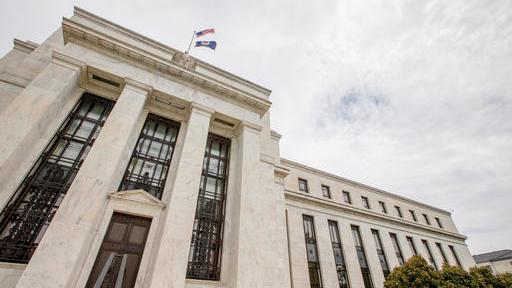Fed may give regional banks a break with proposed rule change
The Federal Reserve is proposing tailoring rules that govern U.S. banks to make the rules proportionate to the amount of risk taken by large banks. The move may level the playing field for regional banks by creating a new set of criteria to decide which large banks are subject to the toughest regulations.
| Ticker | Security | Last | Change | Change % |
|---|---|---|---|---|
| GS | THE GOLDMAN SACHS GROUP INC. | 893.21 | +16.68 | +1.90% |
| JPM | JPMORGAN CHASE & CO. | 317.13 | +4.11 | +1.31% |
Under the proposal, nothing changes for the biggest, most globally interconnected banks like Goldman Sachs or JPMorgan Chase, which would still be subject to the greatest scrutiny. But regional banks – like U.S. Bancorp or Discover Financial Services– with $700 billion in assets or less could get a reprieve from certain regulatory burdens.
| Ticker | Security | Last | Change | Change % |
|---|---|---|---|---|
| USB | U.S. BANCORP | 54.16 | +0.28 | +0.53% |
| DFS | NO DATA AVAILABLE | - | - | - |
| PNC | THE PNC FINANCIAL SERVICES GROUP INC. | 210.31 | +0.84 | +0.40% |
The Fed has created a new framework to assess large banks’ risks to the economy using a handful of factors including the size of the firm based on the total assets, a bank’s transactions with other global banks, off-balance sheet exposure and reliance on different types of short-term funding.
Banks with $100 billion to $250 billion in total assets would no longer be subject to certain capital requirements. Firms with assets of $250 billion or more could see their capital requirements lowered under the current economic environment, though subject to change if economy worsens. But banks that operate globally with $700 billion or more in assets or $75 billion or more in international banking operations would still be subject to more stringent standards.
Dana Ripley, chief communications officer at U.S. Bancorp, in a statement tells FOX Business:
"We are supportive of the Federal Reserve’s common sense proposal to tailor rules based on banks’ different business and risk profiles. We believe it strikes a good balance that would allow banks to foster economic growth, better serve customers, while keeping the banking system strong."
Some firms could also get relief from annual stress testing under the new proposal. Banks with assets of $250 billion or lower would only be subject to stress tests every other year. Federal Reserve Vice Chairman of Supervision Randall Quarles hopes 2019 would be the first off year that the smaller of the large banks would not be subject to the stress test, with the analysis resuming in 2020.
“The proposals before us would prescribe materially less stringent requirements on firms with less risk, while maintaining the most stringent requirements for firms that pose the greatest risks to the financial system and our economy,” said Federal Reserve Chairman Jerome Powell.
The Fed says these changes would help reduce compliance costs that can get passed on to customers. Senior Fed officials say it’s possible banks could increase lending as a result of these proposed changes if implemented, but that there’s no conclusive evidence that it will actual happen.
The central bank estimates the proposed changes would decrease $8 billion of required capital from the system – mostly for banks on the smaller end of the large bank scale and between 2 percent and 2.5 percent of high-quality liquid assets. That would represent six-tenths of a reduction of the $1.3 trillion in capital currently held in aggregate by all large banks.
“The purpose of the package of proposed changes is not to reduce the capital adequacy or liquidity resiliency of the U.S. regional bank holding companies,” said Quarles. “…The character of regulation should match the character of a firm.”
In the future, the Fed will submit a joint proposal with the Federal Deposit Insurance Corporation (FDIC) to tailor resolution planning requirements.
The Fed’s Board of Governors voted to move forward in issuing this proposal by a vote of three to one. Powell, Quarles and Fed Vice Chairman Richard Clarida voted in favor, while Governor Lael Brainard, a Democrat, voted against it. She said relaxing regulatory requirements for banks with assets in the $250 billion to $700 billion range would weaken the buffers that help the resiliency of the financial system and raise the risk that American taxpayers will again be on the hook. The proposal now goes out for comment. When the comment period ends the Fed will review comments, make any tweaks as seen fit and then vote once more on whether to adopt a final proposal.




















